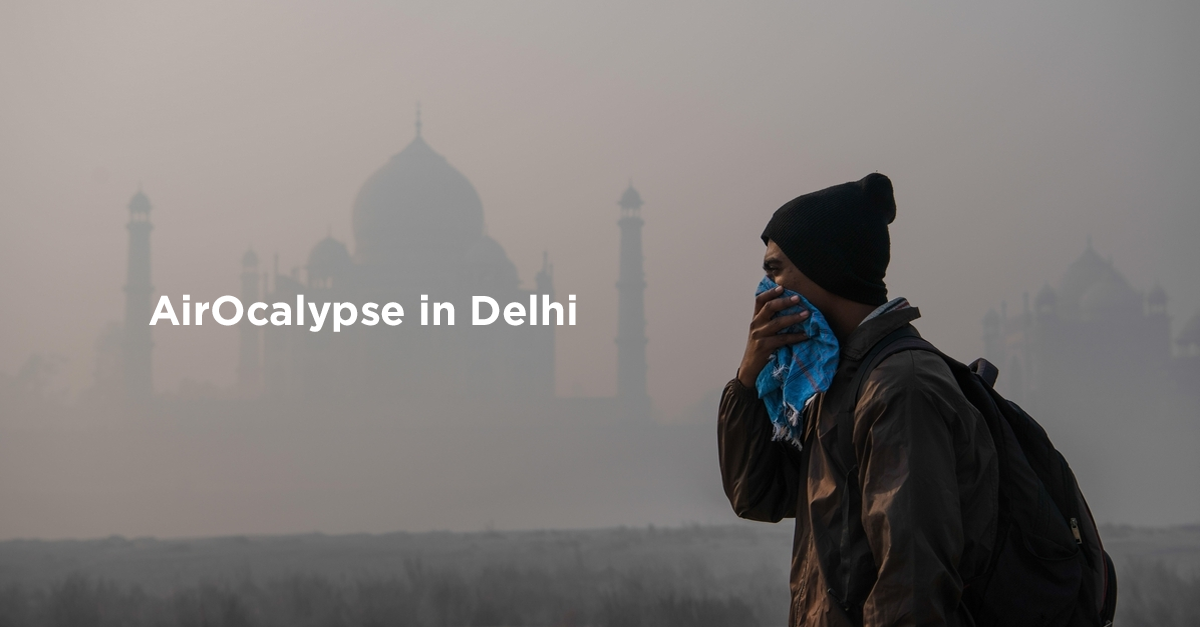For Delhi, the national Capital of India, things are not looking pretty. The city is choking and the citizens are struggling for the most basic need for survival – healthy air to breathe. The Capital seems to have bent the knee to this human-made calamity. A Public Health emergency has been officially declared in the region and air quality is in the ‘severe-plus’ or ‘emergency’ category. This essentially means the city’s air is injurious for a healthy person, and even more detrimental for the already vulnerable, diseased, aged and children.
Some startling numbers:
- In India, air pollution kills over 1.5 million people every year, making it the fifth largest killer in the country.
- The current air quality in Delhi can cause irreversible damage to the lungs of over 2.2 million children in the city.
- As per WHO, Delhi tops the list of cities having the highest death rate from chronic respiratory diseases.
- The AQI (Air Quality Index) shows an obnoxious reading of 999 micrograms per cubic meter of PM 2.5 (particles smaller than 2.5 microns) and PM 10 (particles smaller than 10 microns) in the air, beyond which current technology cannot make measurements.
Frightening, isn’t it? Even the honorable Supreme Court has had to come out with a statement and has rightly declared the situation serious.
I have been following the news in newspapers, media channels and social media for past few days and like most of us, I am concerned. Visuals of masked people roaming amidst thick smog, coughing and with watering eyes, resembles scenes from a horror or a sci-fi movie. As per doctors, this toxicity can cause epilepsy, cancer, multiple sclerosis and diabetes among children, and fatigue, sore throat, lung cancer and early deaths among adults.
Situations like this compel me to wonder if we are heading in the right direction, as humans. In the name of development and scientific advancement, we are plundering our planet beyond repair. We are the first generation to witness such hazardous human-made havoc and probably the last that can do something about it.
Factors contributing to the plight of the city
Air quality of Delhi and nearby areas is generally poor throughout the year. The Air Quality Index records ‘Moderate’ air quality at 101-200 between the months of January to September. It shoots to an alarming 750+ in the months of October, November and December. Many factors can be attributed to such high levels of pollution. The regular ones are industrial, vehicular and thermal power plant emissions and mass construction projects which raise considerable atmospheric dust. To overpopulation, lack of active monitoring and reaction by authorities and general negligence by ordinary people, you can add fireworks, stubble burning in nearby states and cold weather, to reasons for a rise in pollution, in the last three months of the year.
No one would benefit from the blame game
You and I would agree that the situation is quite complex and thus, it calls for a holistic approach from both the Government and people. To curtail the pollution crisis, the Supreme Court of India restricted the sale of firecrackers in Delhi and permanently shut down the extremely polluting Badarpur Power Plant.
The Government tried educating the farmers of nearby States about environment-friendly ways to dispose off their agricultural waste, but burning it takes less effort and involves lower cost. Some out-of-the-box thinking needs to be done to devise ways so that the agricultural waste could be disposed without causing air pollution. Maybe the Government should incentivize farmers to come on board with the waste to energy programs that have been suggested, but are yet to catch on.
The Delhi Government asked the cities residents to attend a four-day Laser show arranged at Connaught Place, instead of lighting firecrackers, but the move has not found many takers. A lot of crackers were burnt despite such appeals and one can’t point the finger at any one strata of society for making this choice either.
What can be done about addressing this crisis?
There is no dearth of measures that can be taken, or innovators with ideas about finding ways to combat the issue, in India. With the right will and intent, a lot can happen. Water sprinkling and vacuum cleaning of roads are some measures that the Government can take to bring the level of hazardous particles down. I read somewhere that a developed city is not the city where the poor use private cars, but it is the city where the rich use public transport. Although, the Government has improved the public transport system over last couple of decades, like the successful spread of the DMRC network, a lot still needs to be done. People should voluntarily car pool and use public transport often.
Till the time we don’t respond to this issue as a united people standing together, I don’t see a possibility for great change. We all would need to join our hands together to preserve this planet, our own health and wellbeing, and the quality of life we leave for our future generations.

